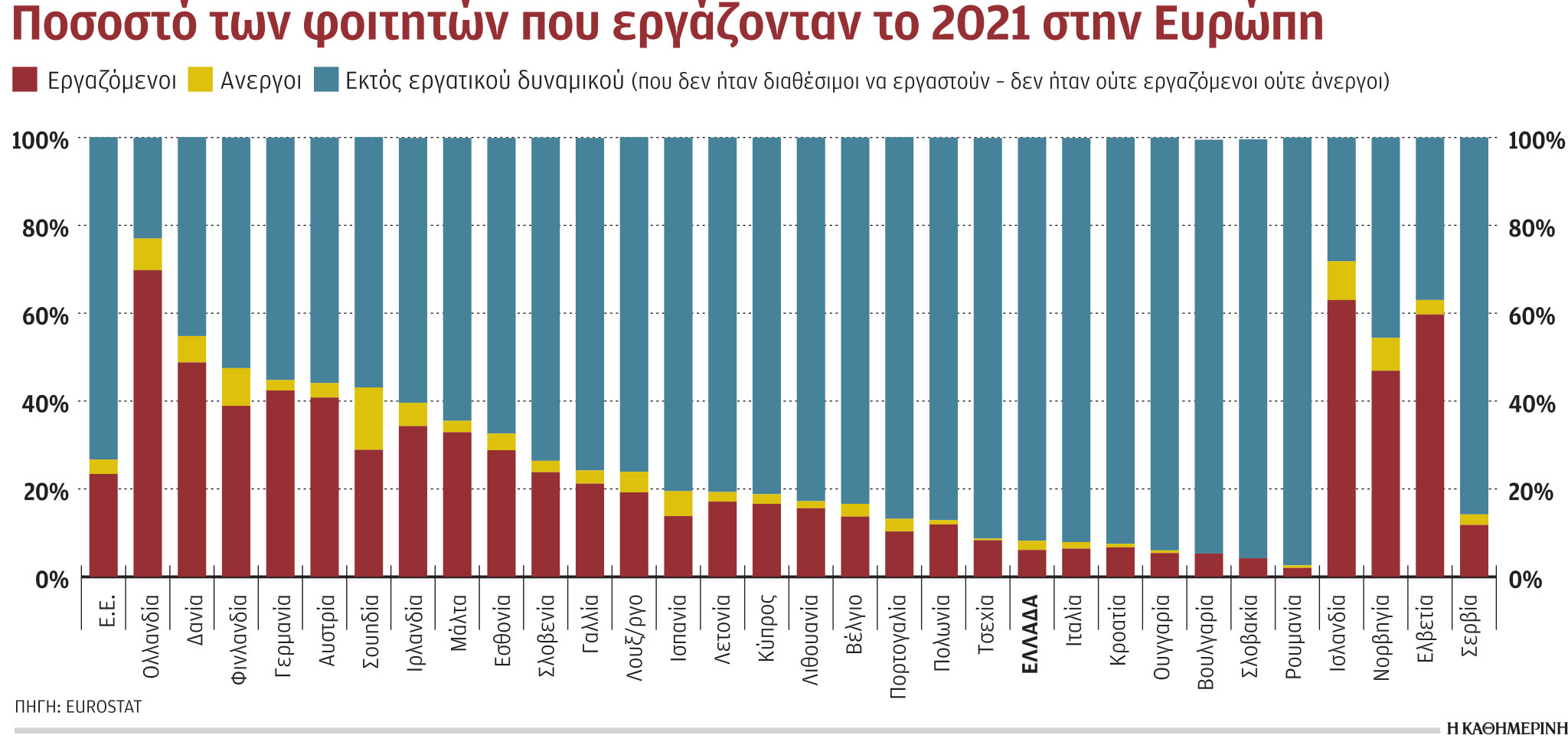
His low relationship education With employment in our country shows his research Eurostat, according to which more than nine out of ten young people under the age of 29 who study have no contact with the labor market. In other words, they are not part of the country’s labor force because they are not employees and do not declare unemployed that they are looking for a job and are ready to fill a vacancy. Thus, according to the European Statistical Service for 2021, 6.1% of young people aged 15 to 29 in Greece who have completed one or another level of formal education or training were employed at the same time.
Another 2.1% were looking for a job and were ready to start working, i.e. unemployed according to the official terminology of the European Union. However, the vast majority of this group, namely 91.8%, were out of the picture. work forcei.e. they were neither employed nor unemployed and therefore had no contact with the labor market. At the EU level, the significantly high proportion of young people under 29 who study and work is 23.4% of this age group, resulting in an average of 73.4% who are completely out of market work. The figures are telling as they show the different speed of young people’s transition from education to the labor market in the context of the European Union, given the provision of quality education to young people.
Percentage of students who worked in 2021 in Europe

It should be noted that in some countries young people are starting to work, for example. in the form of part-time work, weekend work or student work while participating in formal education. This is determined by national education and training systems, as well as other factors such as national labor market characteristics and cultural factors. Overall, in 2021, 23% of new students were also employed, and 3% were looking for a job and were ready to start working (i.e. unemployed). However, 73% were not in the labor force (neither employed nor unemployed).
Our country is at the forefront of Europe in relation to education and the labor market.
The Netherlands has the highest percentage of students and apprentices aged 15 to 29 who worked while studying at 70%, followed by Denmark (49%) and Germany (42%). In contrast, the lowest employment rates among students and trainees aged 15-29 were found in Romania (2%), Slovakia (4%), Hungary and Bulgaria (5% each). Greece ranks second with 6.1%.
The highest percentage of students and trainees aged 15–29 who were unemployed (i.e. looking for a job and ready to start working while studying) was registered in Sweden (14%), followed by Finland (9%) and the Netherlands (7%). %). On the other hand, less than 1% of students and trainees in this age group were unemployed in the Czech Republic, Romania, Hungary and Croatia. The corresponding percentage in our country was 2.1%.
And, as noted by internal labor market participants, the transition of young people from school to work is one of the biggest challenges for Greece, which also suffers from a significantly high youth unemployment rate. In fact, they associate the impossibility of linking education with the domestic labor market not only with the fragmentation of the Greek market, but also with permanent pathologies of the education and training systems, and the low ability of the state to provide personalized services to the population. young people.
Source: Kathimerini
Lori Barajas is an accomplished journalist, known for her insightful and thought-provoking writing on economy. She currently works as a writer at 247 news reel. With a passion for understanding the economy, Lori’s writing delves deep into the financial issues that matter most, providing readers with a unique perspective on current events.